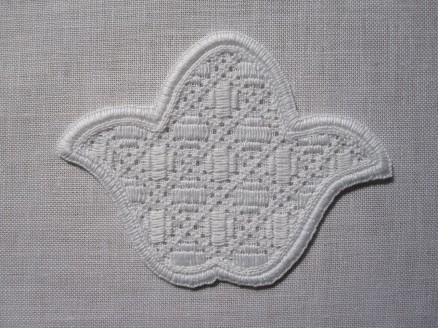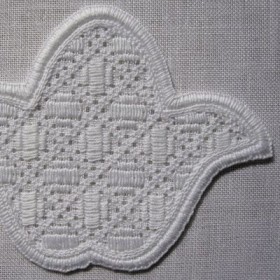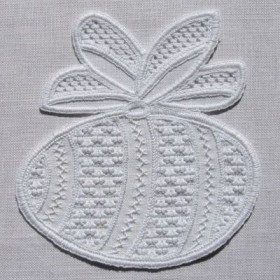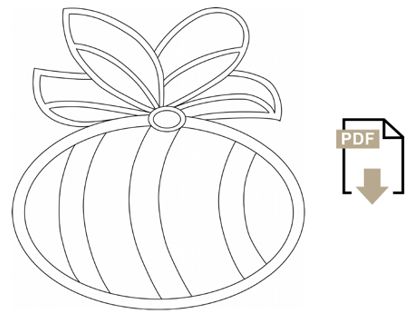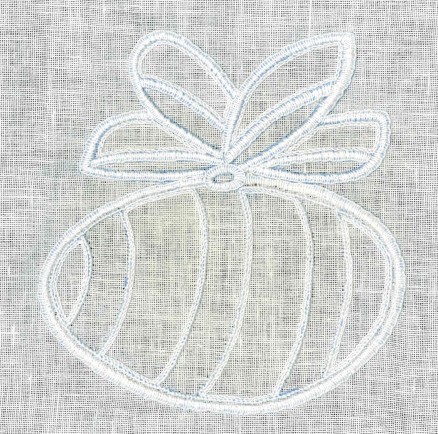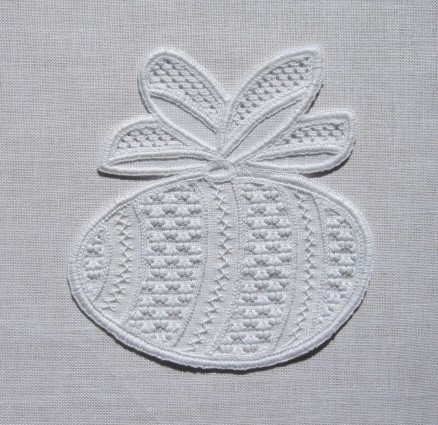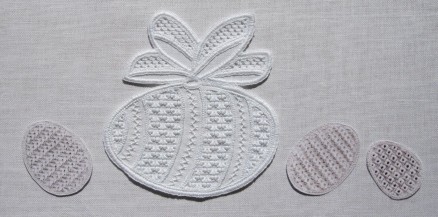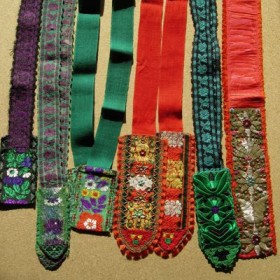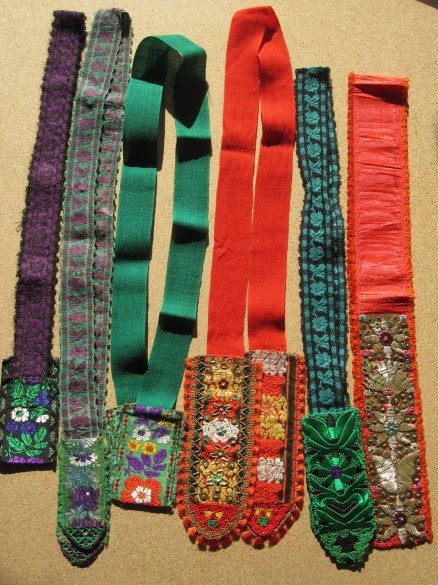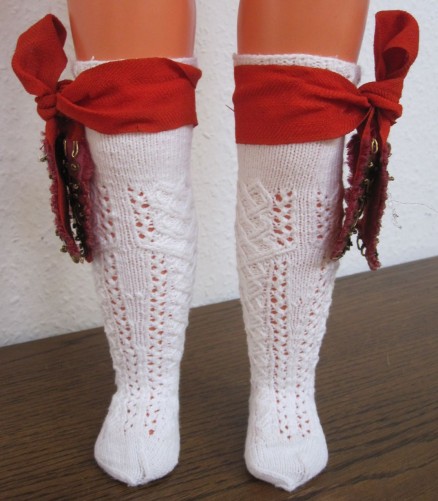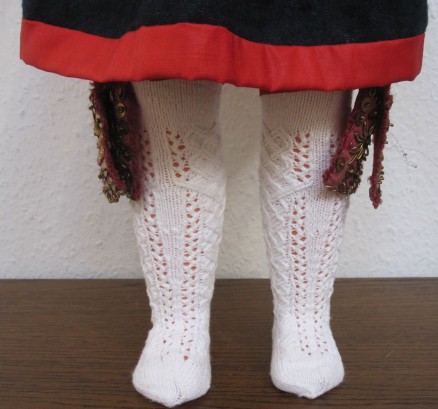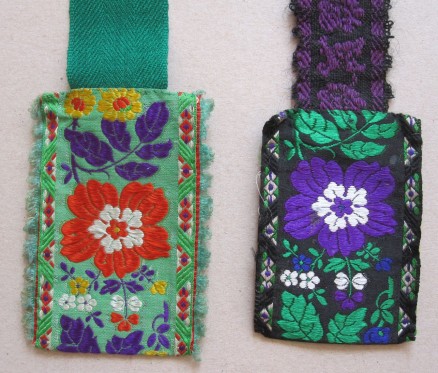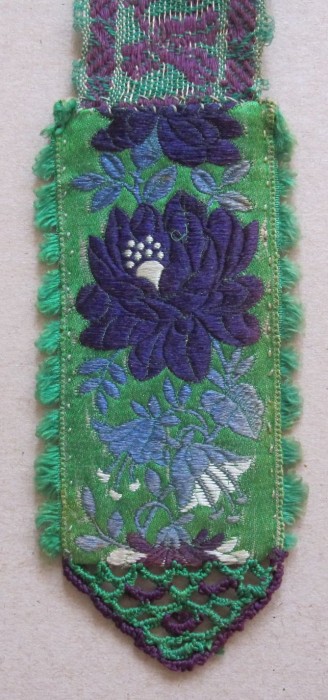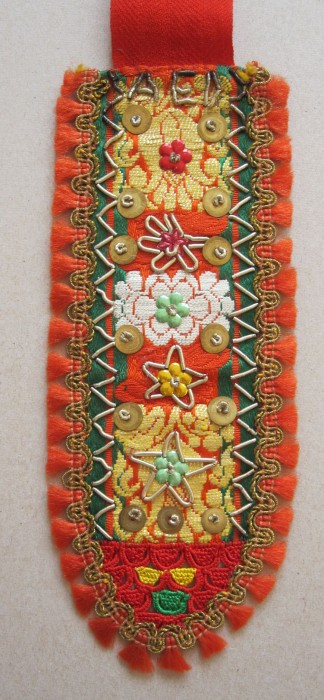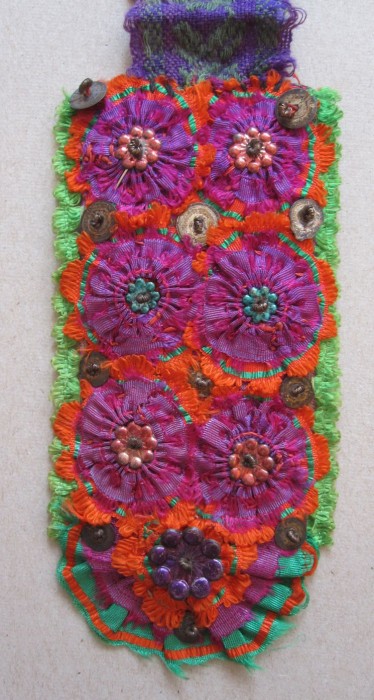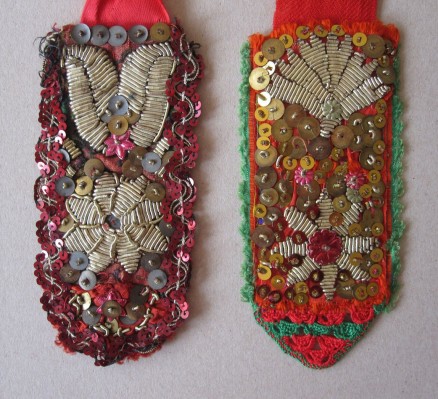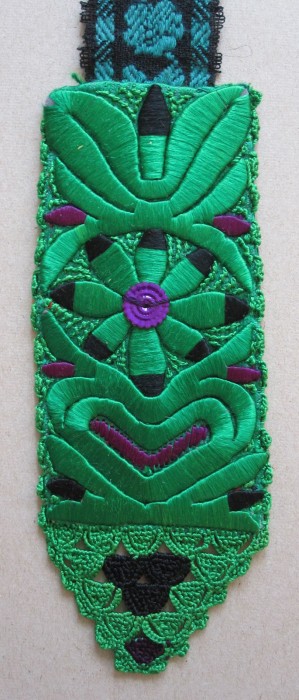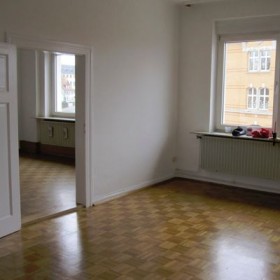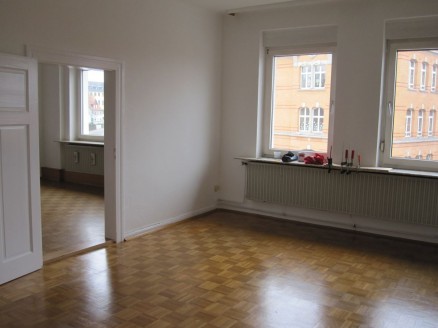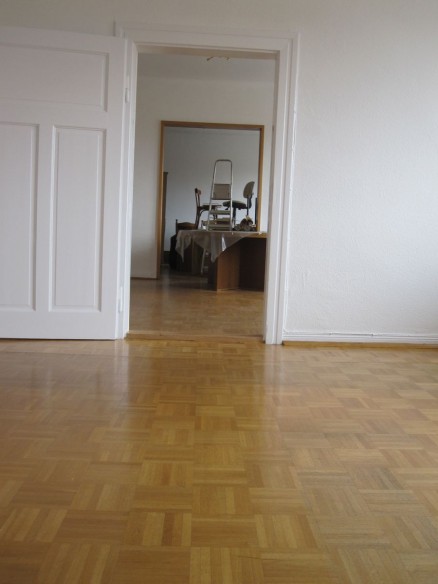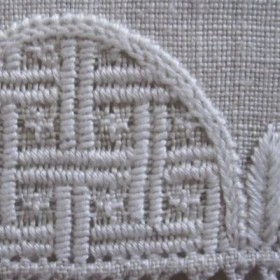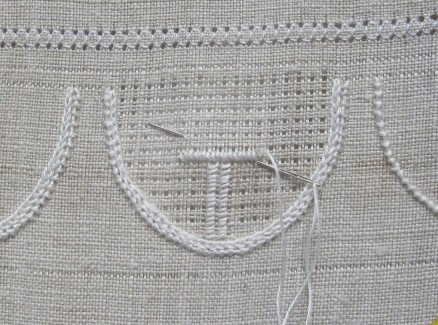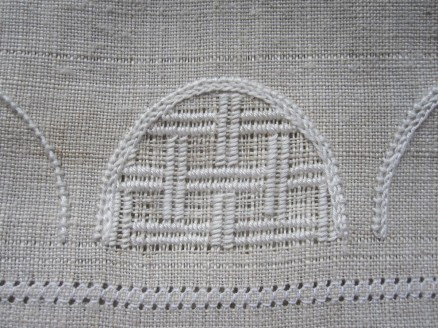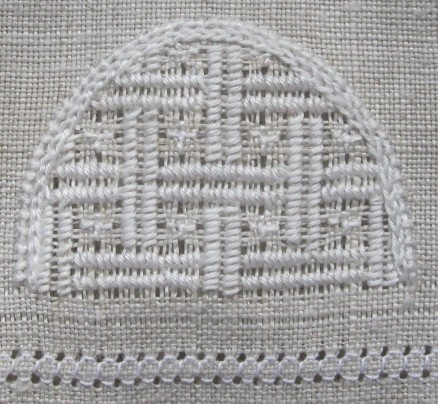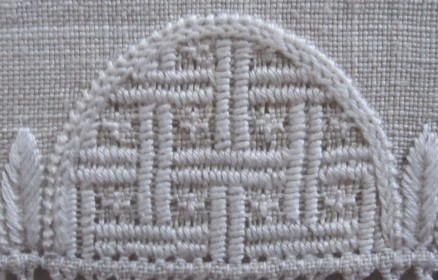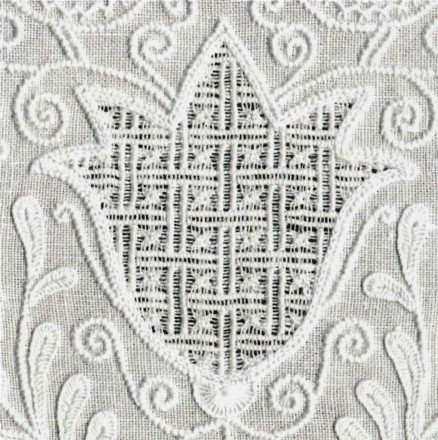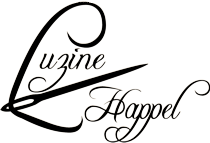No. 448
category: Limet-Filling pattern
stitches used: Rose stitches and Satin stitches over 1 square in the width and 2 squares in the height as well as over 2 squares in the width and 4 squares in the height – changing the direction
longitudinal axis: withdrawn thread line
It is expedient to begin thread withdrawal for the Limet grid in the prepared tulip design here :
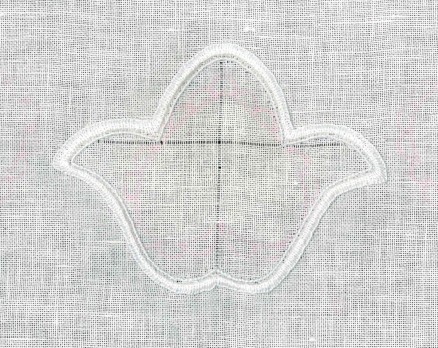 First, in the established Limet grid, work a Rose stitch grid. The diagonal Rose stitch rows are worked at a distance of 6 empty squares (counted horizontally or vertically).
First, in the established Limet grid, work a Rose stitch grid. The diagonal Rose stitch rows are worked at a distance of 6 empty squares (counted horizontally or vertically).
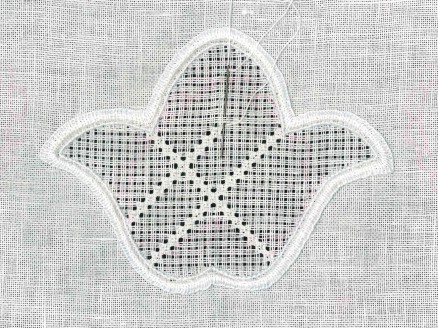 In the remaining spaces Satin stitch blocks are worked. The work proceeds diagonally by always alternating the direction of the blocks from horizontal to vertical and back.
In the remaining spaces Satin stitch blocks are worked. The work proceeds diagonally by always alternating the direction of the blocks from horizontal to vertical and back.
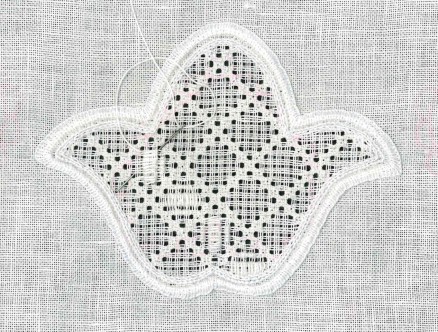 Moving from one block to the next, please slide the working thread through the backs of the previously worked stitches so that the traveling thread is invisible from the front.
Moving from one block to the next, please slide the working thread through the backs of the previously worked stitches so that the traveling thread is invisible from the front.
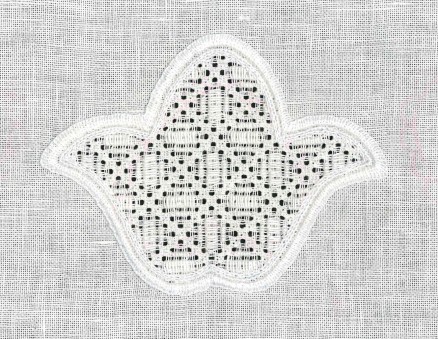 Washed, starched and ironed the pattern gets its full charm. This example was worked on 13.5/cm thread-count linen with Coton à broder No. 20.
Washed, starched and ironed the pattern gets its full charm. This example was worked on 13.5/cm thread-count linen with Coton à broder No. 20.
